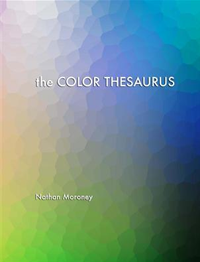Actually, in today's issue the Science magazine editors phrased it differently:
"Two Heads Are Better Than One," but then you have to watch for the caveat. They summarize the research conducted in London and Aarhus as follows: "When two people peer into the distance and try to figure out if a faint number is a three or an eight, classical signal detection theory states that the joint decision can only be as good as that of the person with higher visual acuity. Bahrami et al. propose that a discussion not only of what each person perceives but also of the degree of confidence in those assignments can improve the overall sensitivity of the decision. Using a traditional contrast-detection task, they showed that, when the individuals did not differ too much in their powers of visual discrimination, collective decision-making significantly improved sensitivity. The model offered here formalizes debates held since the Enlightenment about whether collective thinking can outperform that of elite individuals."

In their paper Optimally Interacting Minds in Science of 27 August 2010, the authors describe their experiment, in which six vertically oriented Gabor patches were displayed equidistantly around an imaginary circle. There was one oddball target that had slightly higher contrast than all of the others. Then they tested four models for a dyade identifying correctly the oddball patch.
The four models made different predictions for the relation between the slope of the psychometric function for each individual and the collective dyad; thus, by comparing predicted and observed dyad slopes, the researchers could distinguish the models:
- CF: the joint decision is no better than a coin flip
- BF: pairs of individuals learn, from trial-to-trial feedback, which of them is more accurate, so they eventually use that individual’s decisions
- WCS: confidence, which they define as an internal estimate of the probability of being correct, is communicated
- DSS: the mean and standard deviation of the sensory response to the stimulus about which the decision is made are communicated
The result is that when dyads have matching standard deviations, the DSS model is a better predictor, while when the standard deviations are different, the WCS model sets a quantitative limit on the usefulness of cooperation, so individuals with very different sensitivities are best advised to avoid collaboration and instead should rely entirely on the more sensitive individual.
Therefore, if you manage a team of color scientists, your encouragement of teamwork should depend on your management style.
If your style is the old guerilla approach, where a team of highly motivated researchers attack a hard problem, then you probably groom them at the same level and they will have matching standard deviations in their decisions. In this case, you will get much higher performance with teamwork.
If your style is the army approach, where a hierarchical team slugs away at a big project, teams can cooperate positively on small decisions, while important decisions are better made individually by the manager.
Finally, in the contemporary totem pole approach, where the crew is sorted by contribution to the bottom line and through the use of performance boni there is a large salary span, you are better off using the old divide and conquer management strategy and discourage team work: the member higher up un the totem pole rules the member below.
In summary, when the individuals do not differ too much in their powers of visual discrimination, collective decision-making significantly improves sensitivity, and this is also the caveat.






